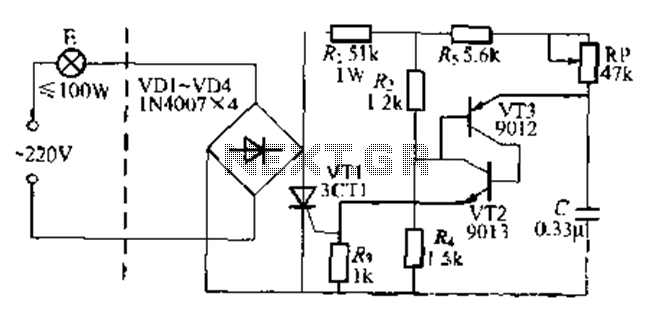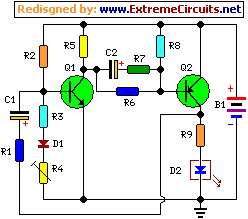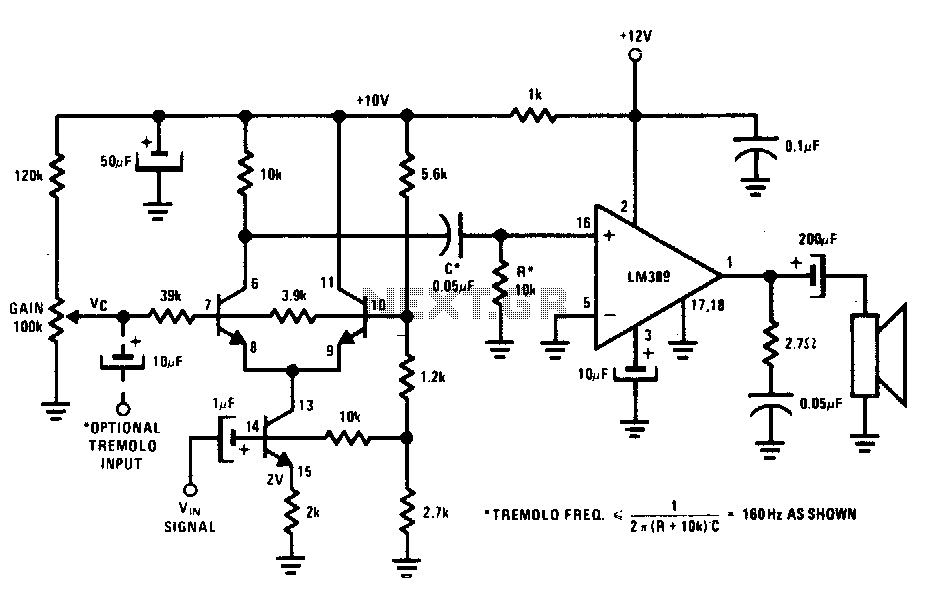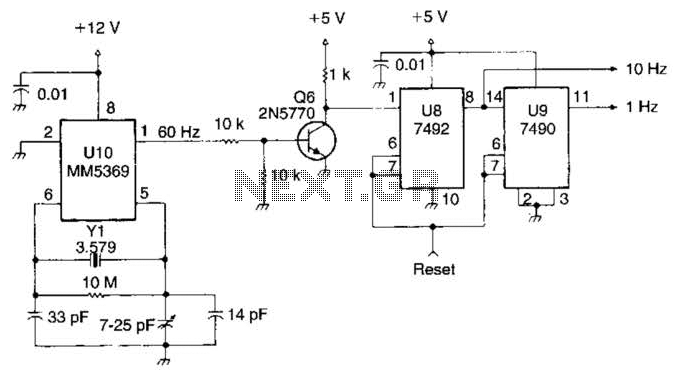
MAX712 charger circuit for gel cells NiMH NiCd batteries
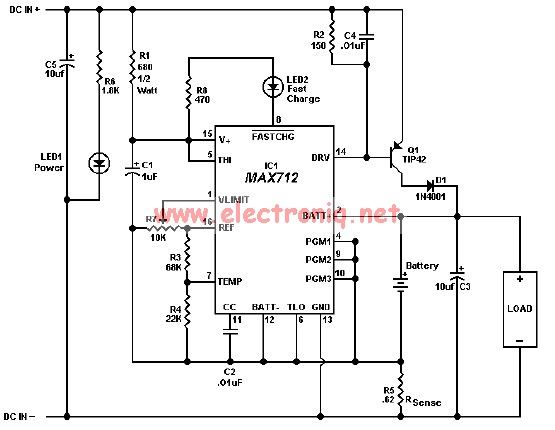
The MAX712 charger requires a power supply with an output voltage that is at least 1.5V higher than the maximum battery voltage. Charge completion is determined by a voltage-slope detecting analog-to-digital converter, a timer, and a temperature window comparator.
The MAX712 is a versatile battery charger designed to charge nickel-cadmium (NiCd) and nickel-metal hydride (NiMH) batteries. It operates by monitoring battery voltage and temperature to ensure safe and efficient charging. The requirement for a power supply with an output voltage at least 1.5V higher than the maximum battery voltage is critical for the charger to function effectively, as it provides the necessary headroom for charging while accommodating voltage drops that may occur during operation.
The charge completion process is governed by a sophisticated control mechanism that includes a voltage-slope detecting analog-to-digital converter (ADC). This ADC continuously monitors the battery voltage during the charging process. When the voltage reaches a predefined threshold, indicating that the battery is fully charged, the ADC signals the charger to terminate the charging cycle.
Additionally, a timer is incorporated into the system to prevent overcharging. This timer is set to allow charging for a predetermined duration, after which it will disable the charging circuit if the battery has not reached the required voltage level. This feature is essential for enhancing the safety and longevity of the battery.
The temperature window comparator further enhances the charging process by monitoring the battery temperature. If the temperature exceeds a safe operating range, the comparator will disable the charger, preventing potential damage due to overheating. This multi-faceted approach to charge completion ensures that the MAX712 charger operates efficiently and safely, providing reliable performance for battery maintenance and longevity.
In summary, the MAX712 charger is a sophisticated device that integrates voltage monitoring, time management, and temperature control to deliver optimal charging conditions for NiCd and NiMH batteries, thus ensuring effective and safe battery management.For the MAX712 charger is needed a power supply with a output voltage with at least 1. 5V higher than the maximum battery voltage. Charge completion is determinate by a voltage-slope detecting analog-to-digital converter, timer, and temperature window comparator. 🔗 External reference
The MAX712 is a versatile battery charger designed to charge nickel-cadmium (NiCd) and nickel-metal hydride (NiMH) batteries. It operates by monitoring battery voltage and temperature to ensure safe and efficient charging. The requirement for a power supply with an output voltage at least 1.5V higher than the maximum battery voltage is critical for the charger to function effectively, as it provides the necessary headroom for charging while accommodating voltage drops that may occur during operation.
The charge completion process is governed by a sophisticated control mechanism that includes a voltage-slope detecting analog-to-digital converter (ADC). This ADC continuously monitors the battery voltage during the charging process. When the voltage reaches a predefined threshold, indicating that the battery is fully charged, the ADC signals the charger to terminate the charging cycle.
Additionally, a timer is incorporated into the system to prevent overcharging. This timer is set to allow charging for a predetermined duration, after which it will disable the charging circuit if the battery has not reached the required voltage level. This feature is essential for enhancing the safety and longevity of the battery.
The temperature window comparator further enhances the charging process by monitoring the battery temperature. If the temperature exceeds a safe operating range, the comparator will disable the charger, preventing potential damage due to overheating. This multi-faceted approach to charge completion ensures that the MAX712 charger operates efficiently and safely, providing reliable performance for battery maintenance and longevity.
In summary, the MAX712 charger is a sophisticated device that integrates voltage monitoring, time management, and temperature control to deliver optimal charging conditions for NiCd and NiMH batteries, thus ensuring effective and safe battery management.For the MAX712 charger is needed a power supply with a output voltage with at least 1. 5V higher than the maximum battery voltage. Charge completion is determinate by a voltage-slope detecting analog-to-digital converter, timer, and temperature window comparator. 🔗 External reference
